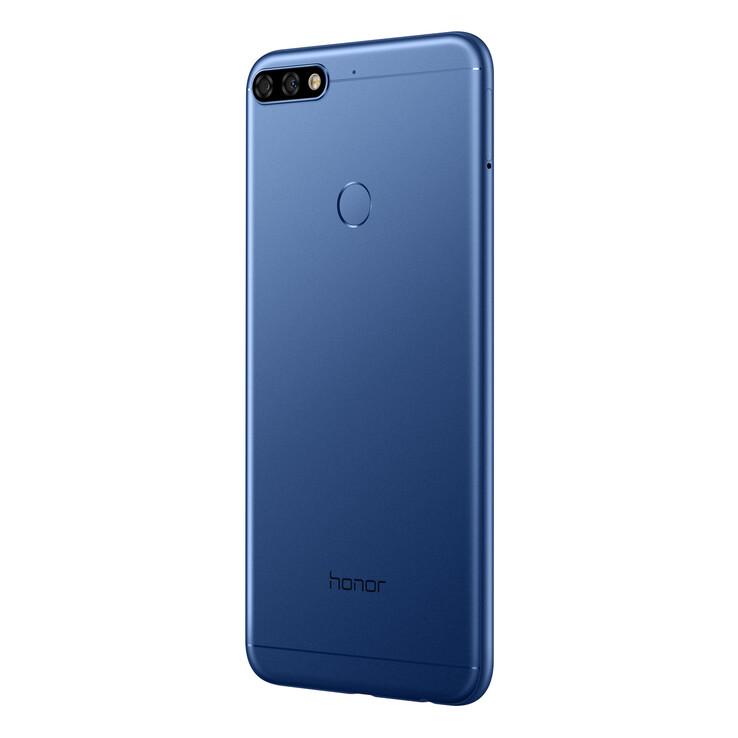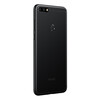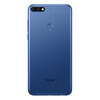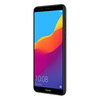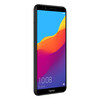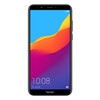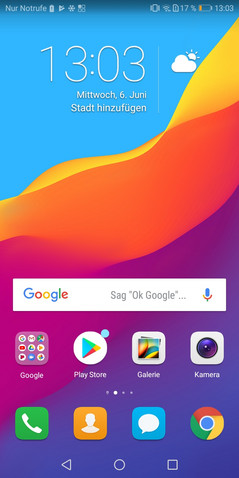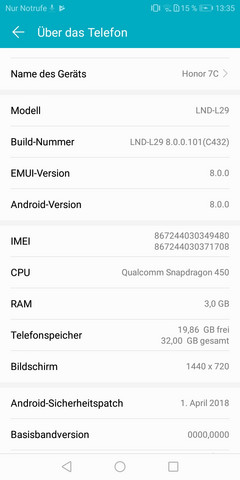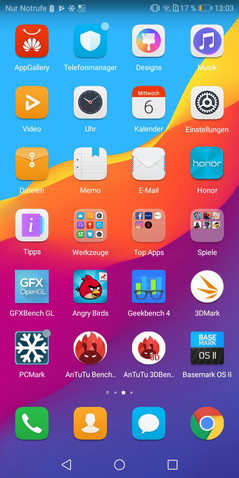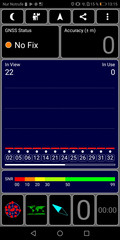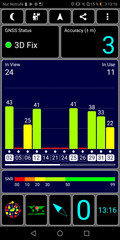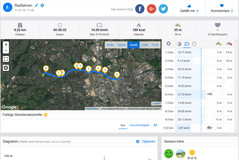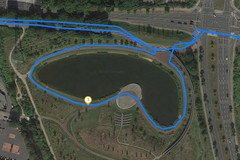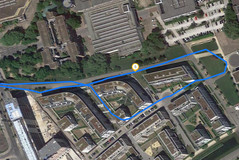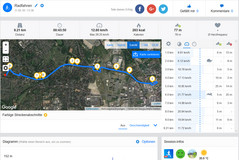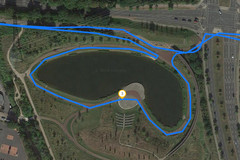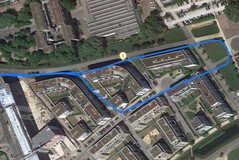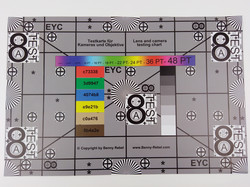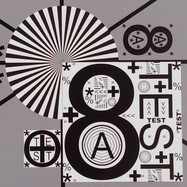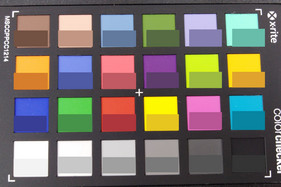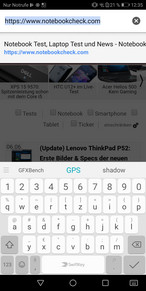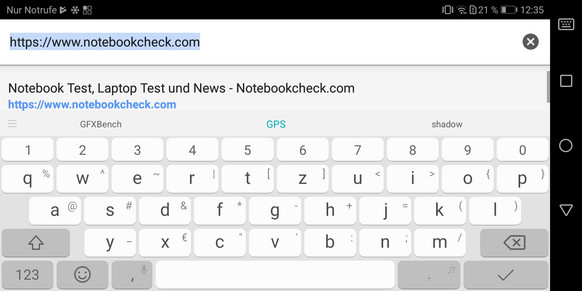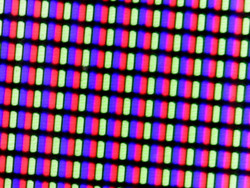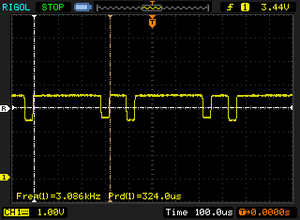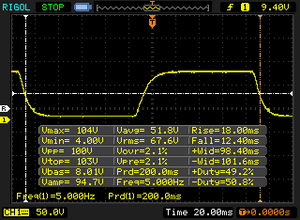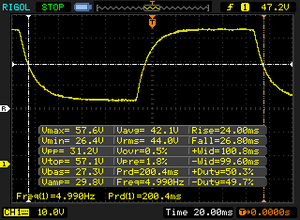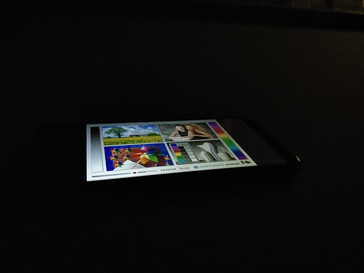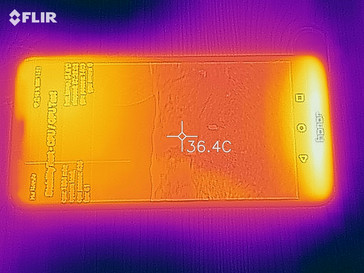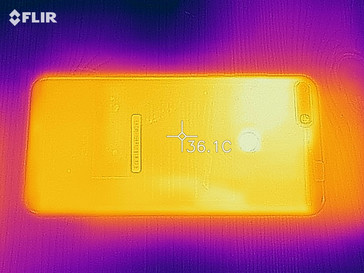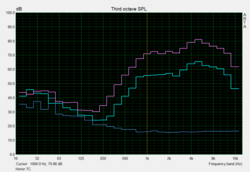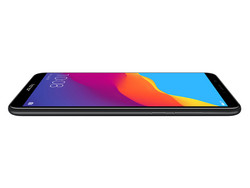Honor 7C Smartphone Review
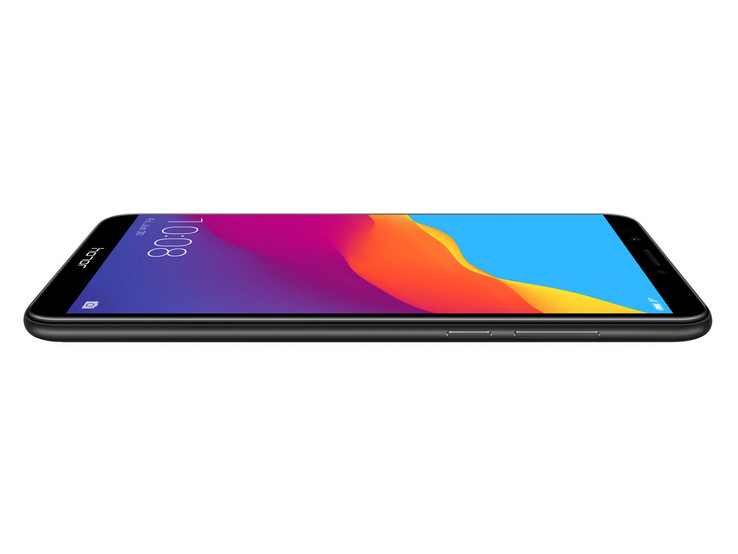
Honor's 7 series has recently expanded somewhat: For a start, there is now the Honor 7A, the cheapest device in the series, with a simple camera and a 5.7-inch screen. The Honor 7X is significantly larger and equipped with a MP dual camera. With its high resolution and ample storage space, it is currently the top model in the series. The Honor 7C - our test device - falls between the other two smartphones, solidly in the lower mid-range price bracket. And indeed, its specifications also position it right between the other devices in the series: It has a dual camera, but the second sensor's lens has a rather low resolution. The display resolution and storage space are also appropriate to the price tag of 180 Euros (~$210; similar cost in the US). Incidentally, the Honor 7C is the successor of the Honor 6C.
For the purposes of this review, we will compare the Honor 7C with the Motorola Moto G6 Play, the Huawei Y7 2018 and the Xiaomi Redmi 5 Plus.
Case - Stable metal back on the Honor 7C
Honor has opted to outfit the 7C with a modern 2:1 display that looks fashionable, despite its lower mid-range price tag. The panel has narrow side borders and somewhat wider borders at the top and bottom. On the company website, Honor refers only to the smartphone's "metal design", but the material on the back is truly metal. The front is equipped with 2.5D glass that is shielded with a solid protective film. The transition is clearly visible, but the screen is still well-protected.
At 164 grams (0.36 lbs), the Honor 7C is quite a lightweight smartphone, yet it feels good in the hand. The back gives way slightly under pressure, which detracts from the smartphone's otherwise sturdy quality. Fortunately, the pressure does not reach the screen, and the front of the smartphone is quite stable. It can hardly be pressed in or twisted at all and makes no cracking noises under pressure.
Connectivity - Features typical of this price bracket
With 32 GB of storage and 3 GB of RAM, the Honor 7C positions itself in between similarly-priced devices: The competitor from the same manufacturer, the Huawei Y7 2018, only offers 16 GB/2 GB, while the Xiaomi Redmi 5 Plus is equipped with 64 GB of storage space and 4 GB of RAM. Overall, the Honor 7C's connectivity is fitting for its price class. It has no unusual connections, just a USB 2.0 port and the usual Bluetooth 4.2. Honor is actively advertising the dual Bluetooth function, which allows two Bluetooth devices to be connected with the smartphone simultaneously.
Software - Pre-installed apps are a blessing and a curse
Honor's parent company, Huawei, is known for selling smartphones with a large number of pre-installed apps. That has both advantages and disadvantages: Some useful tools, such as a proprietary backup system and a design app for customizing the layout of the user interface, are nice additions. But the smartphone also arrives with advertising apps and Free2Play games that are just a waste of space for most users. Fortunately, most apps can be easily deleted.
Android 8, overlaid with Huawei's EMUI, serves as the device's operating system. The security patches at the time of review date from April 2018 and are thus reasonably current.
Communication and GPS - Slow WLAN, precise GPS
The fact that the Honor 7C does not support 5 GHz WLAN is a shame, but not unusual in this price bracket. Among our comparison devices, only the Xiaomi Redmi 5 Plus offers the lesser-used frequency. In our benchmark with the Linksys EA8500 reference router, the smartphone lands in the lower-average range compared to the other devices. Even so, it is nearly as fast as the more expensive Honor 7X.
The smartphone supports 7 LTE bands, which should be sufficient for trips within Europe. Travelers to far-off destinations, however, may find that the Honor 7C cannot access the network.
| Networking | |
| iperf3 transmit AX12 | |
| Huawei Y7 2018 | |
| Xiaomi Redmi 5 Plus | |
| Honor 7C | |
| Huawei Honor 7X | |
| Motorola Moto G6 Play | |
| iperf3 receive AX12 | |
| Average of class Smartphone (last 2 years) | |
| Huawei Y7 2018 | |
| Xiaomi Redmi 5 Plus | |
| Huawei Honor 7X | |
| Honor 7C | |
| Motorola Moto G6 Play | |
Indoors, the Honor 7C's GPS module cannot determine its location; but as soon as the smartphone is taken outdoors, it immediately positions itself and is accurate to 3 meters (~10 feet).
In order to test the smartphone's positioning abilities in everyday use, we took it on a bike ride along with our professional navigation device, the Garmin Edge 500. Both devices reproduced the route well, though the Garmin device was a little more precise. For non-professional use without higher expectations, the Honor 7C should be a perfectly sufficient companion.
Phone Function and Call Quality - The Honor 7C has good voice quality
The telephone app on the Huawei Honor 7C looks somewhat different from the respective app on devices with Vanilla Android, but it functions quite similarly: It displays a tab with the telephone pad and received/missed/dialed calls. The user can also access their contacts and favorites directly from the tab.
At maximum volume, the voice quality is mediocre. The speaker readily distorts the voice at the other end of the call and produces an irritating buzzing sound. However, if the volume is dialed down somewhat, the conversation partner's voice feels quite near. The user's voice is transmitted cleanly. In calls over the speakerphone, the person at the other end is still easy to understand. But the user must take care to speak loud enough, as the microphone fails to pick up quiet voices.
Cameras - The Huawei Honor 7C offers (almost) a dual camera
The Honor 7C comes with a dual camera, but this should by no means be taken to refer to two independent lenses. Independent lenses perform tricks such as optical zoom, whereas this is simply a 13 MP main lens and a 2 MP secondary lens for depth of field effects. Even so, the Honor 7C outdoes the competition here, given that all of the comparison devices in this price bracket only offer a single camera.
Photos taken in normal lighting look quite bright and also quite sharp. However, bright areas bloom easily and lose their definition. In dark environments, the camera cannot be used without the flash. The images lack light and are quite blurry.
Videos can be recorded in Full HD at 30 FPS. Both the image sharpness and the color reproduction are reasonably good, and details are rendered quite clearly.
The front camera has a resolution of 8 MP and takes pictures that are somewhat lacking in color. Bright areas bloom easily here too. However, as with the back camera, we are satisfied with its image sharpness.
In the regulated lighting conditions in our laboratory, the main camera performs well in terms of image sharpness, but more contrast certainly would not hurt. The edges exhibit a minimal amount of colored fringe, and the solid areas are not quite clean; but for a smartphone camera in this price range, it carries out its task quite well. The color reproduction, however, is clearly too pale.
Accessories and Warranty - Only the basic necessities
The packaging contains nothing more than a power supply, a USB cable, a SIM tool and the usual leaflets. Accessories specifically designed for the device are not available in the Huawei or the Honor online shop.
The Honor 7C comes with a 24-month warranty in the EU. Please see our Guarantees, Return policies and Warranties FAQ for country-specific information.
Input Devices and Operation - Smooth input recognition despite protective film
Swift Key serves as the smartphone's keyboard app; other keyboard apps must be installed manually. But typing goes quickly with Swift Key, and it offers a host of customization options.
Fingers glide smoothly over the protective film on the touchscreen. The smartphone recognizes input flawlessly, whether in the middle of the screen, along the edges or in the corners.
A simple mode with fewer symbols allows the user to activate the smartphone's basic functions. The navigation bar, as an alternative to the menu buttons located at the bottom edge of the screen, is also available for those who prefer it.
Display - Not exactly bright and lacks contrast
1440x720 pixels is a perfectly normal resolution in this price bracket, but the Honor 7C's large display demands a higher resolution to look 100% sharp. The manufacturer justifies the Honor 7X's higher price with its somewhat higher resolution, but the Xiaomi Redmi 5 Plus offers more pixels too.
At 403 cd/m², the smartphone's average brightness is mediocre, although the Huawei Y7 2018 is even darker. In addition, the similarity of brightness distribution across the screen is just 85%. Differences in brightness are definitely visible in larger monochromatic areas.
| |||||||||||||||||||||||||
Brightness Distribution: 85 %
Center on Battery: 392 cd/m²
Contrast: 643:1 (Black: 0.61 cd/m²)
ΔE Color 5.4 | 0.5-29.43 Ø5
ΔE Greyscale 4.2 | 0.57-98 Ø5.3
Gamma: 2.59
| Honor 7C IPS, 1440x720, 5.99 | Motorola Moto G6 Play IPS, 1440x720, 5.70 | Huawei Honor 7X IPS, 2160x1080, 5.93 | Xiaomi Redmi 5 Plus IPS, 2160x1080, 5.99 | Huawei Y7 2018 IPS, 1440x720, 5.99 | |
|---|---|---|---|---|---|
| Screen | 44% | 42% | 33% | 20% | |
| Brightness middle | 392 | 614 57% | 533.2 36% | 620 58% | 393 0% |
| Brightness | 403 | 593 47% | 511 27% | 612 52% | 365 -9% |
| Brightness Distribution | 85 | 90 6% | 88 4% | 96 13% | 85 0% |
| Black Level * | 0.61 | 0.29 52% | 0.35 43% | 0.57 7% | 0.29 52% |
| Contrast | 643 | 2117 229% | 1523 137% | 1088 69% | 1355 111% |
| Colorchecker dE 2000 * | 5.4 | 5.9 -9% | 2.83 48% | 3.46 36% | 5.28 2% |
| Colorchecker dE 2000 max. * | 9.7 | 9.6 1% | 6.72 31% | 7.88 19% | 9 7% |
| Greyscale dE 2000 * | 4.2 | 5.5 -31% | 3.7 12% | 3.9 7% | 4.2 -0% |
| Gamma | 2.59 85% | 2.32 95% | 1.9 116% | 2.073 106% | 2.6 85% |
| CCT | 6734 97% | 7822 83% | 6918 94% | 7230 90% | 7086 92% |
* ... smaller is better
Screen Flickering / PWM (Pulse-Width Modulation)
| Screen flickering / PWM detected | 3086 Hz | ≤ 26 % brightness setting | |
The display backlight flickers at 3086 Hz (worst case, e.g., utilizing PWM) Flickering detected at a brightness setting of 26 % and below. There should be no flickering or PWM above this brightness setting. The frequency of 3086 Hz is quite high, so most users sensitive to PWM should not notice any flickering. In comparison: 53 % of all tested devices do not use PWM to dim the display. If PWM was detected, an average of 17903 (minimum: 5 - maximum: 3846000) Hz was measured. | |||
The display's black value of 0.61 cd/m² also fails to impress. 643:1 is not a strong contrast ratio either. As a result, the colors on the display look fairly pallid. The color temperature can be freely adjusted in the menu settings, or the user can simply use the warm and cold presets.
We use a spectrophotometer and the CalMAN software to determine a display's color accuracy. Here we found that the panel does not suffer from a blue cast, and its average color accuracy is also acceptable.
We also established that the screen flickers at a high frequency. Fortunately, this means that even sensitive individuals should not have to worry about eye problems or headaches.
Display Response Times
| ↔ Response Time Black to White | ||
|---|---|---|
| 30.4 ms ... rise ↗ and fall ↘ combined | ↗ 18 ms rise | |
| ↘ 12.4 ms fall | ||
| The screen shows slow response rates in our tests and will be unsatisfactory for gamers. In comparison, all tested devices range from 0.1 (minimum) to 240 (maximum) ms. » 80 % of all devices are better. This means that the measured response time is worse than the average of all tested devices (21.5 ms). | ||
| ↔ Response Time 50% Grey to 80% Grey | ||
| 50.8 ms ... rise ↗ and fall ↘ combined | ↗ 24 ms rise | |
| ↘ 26.8 ms fall | ||
| The screen shows slow response rates in our tests and will be unsatisfactory for gamers. In comparison, all tested devices range from 0.2 (minimum) to 636 (maximum) ms. » 85 % of all devices are better. This means that the measured response time is worse than the average of all tested devices (33.7 ms). | ||
Outdoors, low display brightness comes up against the added problem of surface reflections. The screen content is still somewhat visible in the shade, but in brighter environments it is almost entirely obscured.
In principle, the IPS display is readable even from flat angles, but the brightness level varies noticeably.
Performance - High performance thanks to Qualcomm
The SoC at work in the Honor 7C is almost unusual for a Huawei smartphone: Because Huawei engineers its own SoCs, typically it uses those chips. But in this case we have Qualcomm's Snapdragon 450, at least in the version sold in the West.
The Snapdragon 450 is certainly a good choice, given that its eight cores and up to 1.8 GHz provide more performance than usual for this price bracket. In the benchmarks, the Honor 7C clearly outperforms the Huawei Y7 2018, and even the significantly more expensive Honor 7X cannot get far ahead. An Adreno 506 serves as the smartphone's graphics unit. This part of the SoC also brings considerably more performance power than other devices in this price range. Only the Xiaomi Redmi 5 Plus is faster in terms of graphics.
| AnTuTu v6 - Total Score (sort by value) | |
| Honor 7C | |
| Motorola Moto G6 Play | |
| Huawei Honor 7X | |
| Xiaomi Redmi 5 Plus | |
| Huawei Y7 2018 | |
| Average Qualcomm Snapdragon 450 (54731 - 60077, n=10) | |
| AnTuTu v7 - Total Score (sort by value) | |
| Honor 7C | |
| Motorola Moto G6 Play | |
| Huawei Honor 7X | |
| Xiaomi Redmi 5 Plus | |
| Huawei Y7 2018 | |
| Average Qualcomm Snapdragon 450 (56497 - 73468, n=11) | |
| GFXBench 3.1 | |
| on screen Manhattan ES 3.1 Onscreen (sort by value) | |
| Honor 7C | |
| Motorola Moto G6 Play | |
| Huawei Honor 7X | |
| Xiaomi Redmi 5 Plus | |
| Huawei Y7 2018 | |
| Average Qualcomm Snapdragon 450 (5.7 - 13, n=13) | |
| Average of class Smartphone (3.7 - 158, n=185, last 2 years) | |
| 1920x1080 Manhattan ES 3.1 Offscreen (sort by value) | |
| Honor 7C | |
| Motorola Moto G6 Play | |
| Huawei Honor 7X | |
| Xiaomi Redmi 5 Plus | |
| Huawei Y7 2018 | |
| Average Qualcomm Snapdragon 450 (6 - 6.9, n=13) | |
| Average of class Smartphone (6.2 - 279, n=185, last 2 years) | |
When it comes to surfing the internet, on the other hand, the Honor 7C cannot secure a leading position. Even so, it ranks safely in the middle of our comparison devices. From a subjective perspective: Sites load relatively quickly, but photos take time.
| JetStream 1.1 - Total Score | |
| Average of class Smartphone (last 2 years) | |
| Huawei Honor 7X (Chrome 63.0.3239.111) | |
| Xiaomi Redmi 5 Plus (Chrome 66) | |
| Average Qualcomm Snapdragon 450 (22 - 22.7, n=13) | |
| Honor 7C (Chrome 66) | |
| Motorola Moto G6 Play (Chrome 66) | |
| Huawei Y7 2018 (Chrome 66) | |
| Octane V2 - Total Score | |
| Average of class Smartphone (2228 - 89112, n=214, last 2 years) | |
| Huawei Honor 7X (Chrome 63.0.3239.111) | |
| Xiaomi Redmi 5 Plus (Chrome 66) | |
| Average Qualcomm Snapdragon 450 (3470 - 4115, n=14) | |
| Honor 7C (Chrome 66) | |
| Huawei Y7 2018 (Chrome 66) | |
| Motorola Moto G6 Play (Chrome 66) | |
| Mozilla Kraken 1.1 - Total | |
| Motorola Moto G6 Play (Chrome 66) | |
| Huawei Y7 2018 (Chrome 66) | |
| Average Qualcomm Snapdragon 450 (11012 - 11863, n=14) | |
| Honor 7C (Chrome 66) | |
| Xiaomi Redmi 5 Plus (Chrome 66) | |
| Huawei Honor 7X (Chrome 63.0.3239.111) | |
| Average of class Smartphone (388 - 9999, n=173, last 2 years) | |
* ... smaller is better
The speed of the Huawei Honor 7C's internal storage medium is mediocre: The Huawei Y7 2018 is outpaced here too, but most of the other devices are able to access data more quickly.
We use a Toshiba Exceria Pro M501 as a reference card to test how fast a smartphone can access a microSD card. The Honor 7C's results are typical of its price class here. On the subject of the microSD slot: Interestingly, Honor has opted to equip the smartphone with 2 SIM card slots as well as a separate microSD slot, enabling the user to utilize all three at once. MicroSD cards are always treated as external memory, and the storage space can be used for apps.
| Honor 7C | Motorola Moto G6 Play | Huawei Honor 7X | Xiaomi Redmi 5 Plus | Huawei Y7 2018 | Average 32 GB eMMC Flash | Average of class Smartphone | |
|---|---|---|---|---|---|---|---|
| AndroBench 3-5 | 106% | 31% | 32% | -5% | 18% | 1156% | |
| Sequential Read 256KB | 297 | 243.7 -18% | 265.3 -11% | 270 -9% | 256 -14% | 242 ? -19% | 1508 ? 408% |
| Sequential Write 256KB | 115 | 135.8 18% | 127.9 11% | 194.5 69% | 71.5 -38% | 100.5 ? -13% | 1118 ? 872% |
| Random Read 4KB | 30 | 65.9 120% | 81.4 171% | 79.5 165% | 38.8 29% | 43.2 ? 44% | 247 ? 723% |
| Random Write 4KB | 10 | 61.7 517% | 20.24 102% | 7.1 -29% | 9.5 -5% | 22.4 ? 124% | 272 ? 2620% |
| Sequential Read 256KB SDCard | 83.9 ? | 83.2 ? -1% | 52.7 -37% | 84.4 1% | 85 1% | 71.8 ? -14% | |
| Sequential Write 256KB SDCard | 62.6 ? | 60.7 ? -3% | 30.55 -51% | 59.5 -5% | 61.5 -2% | 52.9 ? -15% |
Games - OK for fairly lightweight games
Simple games like “Angry Birds” are no problem for the Honor 7C, and somewhat more demanding 3D games, “Temple Run 2”, for example, also run flawlessly. The screen's low resolution is certainly a benefit here.
There is no lag in the smartphone's reaction to input via the position sensor or touchscreen.
Emissions - Remains cool, reasonably good speaker
The temperatures in idle mode and under load are almost identical. In both modes, the lower portion of the front warms up the most. This is hardly noticeable, however, as the smartphone always maintains a comfortable temperature.
(+) The maximum temperature on the upper side is 38.6 °C / 101 F, compared to the average of 35 °C / 95 F, ranging from 21.9 to 56 °C for the class Smartphone.
(+) The bottom heats up to a maximum of 34.8 °C / 95 F, compared to the average of 33.8 °C / 93 F
(±) In idle usage, the average temperature for the upper side is 35.3 °C / 96 F, compared to the device average of 32.7 °C / 91 F.
Speaker
A small mono speaker on the bottom edge of the device is responsible for sound production, and it does a reasonably good job. At a maximum of 87.3 dB(A), it can get quite loud—and even at maximum volume, the sound is still relatively clear. It does not hold a candle to a stereo, of course, but the sound is quite good for a device in this price bracket.
Speakers or headphones can be plugged into the 3.5mm jack, and the resulting sound is clean in both cases.
Honor 7C audio analysis
(+) | speakers can play relatively loud (87.3 dB)
Bass 100 - 315 Hz
(-) | nearly no bass - on average 36.9% lower than median
(+) | bass is linear (5.4% delta to prev. frequency)
Mids 400 - 2000 Hz
(±) | reduced mids - on average 6.6% lower than median
(±) | linearity of mids is average (7.9% delta to prev. frequency)
Highs 2 - 16 kHz
(±) | higher highs - on average 5.5% higher than median
(+) | highs are linear (4.5% delta to prev. frequency)
Overall 100 - 16.000 Hz
(±) | linearity of overall sound is average (25.4% difference to median)
Compared to same class
» 57% of all tested devices in this class were better, 8% similar, 35% worse
» The best had a delta of 12%, average was 38%, worst was 134%
Compared to all devices tested
» 74% of all tested devices were better, 5% similar, 20% worse
» The best had a delta of 4%, average was 25%, worst was 134%
Huawei Honor 7X audio analysis
(±) | speaker loudness is average but good (78.7 dB)
Bass 100 - 315 Hz
(-) | nearly no bass - on average 26.3% lower than median
(±) | linearity of bass is average (8.5% delta to prev. frequency)
Mids 400 - 2000 Hz
(±) | higher mids - on average 6.1% higher than median
(±) | linearity of mids is average (9.3% delta to prev. frequency)
Highs 2 - 16 kHz
(±) | higher highs - on average 11.5% higher than median
(±) | linearity of highs is average (11.1% delta to prev. frequency)
Overall 100 - 16.000 Hz
(-) | overall sound is not linear (34.9% difference to median)
Compared to same class
» 82% of all tested devices in this class were better, 1% similar, 17% worse
» The best had a delta of 12%, average was 38%, worst was 134%
Compared to all devices tested
» 92% of all tested devices were better, 1% similar, 7% worse
» The best had a delta of 4%, average was 25%, worst was 134%
Battery Life - Low power consumption, good endurance
The Honor 7C's power usage when turned off is encouragingly low. The smartphone's energy consumption is impressive in general, given that the rest of the comparison devices need significantly more energy.
| Off / Standby | |
| Idle | |
| Load |
|
| Honor 7C 3000 mAh | Motorola Moto G6 Play 4000 mAh | Huawei Honor 7X 3340 mAh | Xiaomi Redmi 5 Plus 4000 mAh | Huawei Y7 2018 3000 mAh | Average Qualcomm Snapdragon 450 | Average of class Smartphone | |
|---|---|---|---|---|---|---|---|
| Power Consumption | -9% | -40% | -47% | -32% | -26% | -41% | |
| Idle Minimum * | 0.6 | 0.68 -13% | 1.02 -70% | 0.7 -17% | 0.9 -50% | 0.794 ? -32% | 0.897 ? -50% |
| Idle Average * | 2.16 | 1.8 17% | 2.46 -14% | 2.8 -30% | 1.9 12% | 2.27 ? -5% | 1.452 ? 33% |
| Idle Maximum * | 2.24 | 1.83 18% | 2.51 -12% | 3.4 -52% | 2.3 -3% | 2.48 ? -11% | 1.629 ? 27% |
| Load Average * | 2.59 | 3.38 -31% | 4.16 -61% | 4.2 -62% | 4.7 -81% | 3.95 ? -53% | 5.55 ? -114% |
| Load Maximum * | 4.11 | 5.67 -38% | 5.87 -43% | 7.2 -75% | 5.7 -39% | 5.38 ? -31% | 8.31 ? -102% |
* ... smaller is better
Battery Life
The Honor 7C's efficient use of energy is apparent in its battery life: The smartphone lasted a good 11:33 hours in our WLAN test. This run time is especially good considering that the Honor 7C's battery capacity is only 3000 mAh. The Huawei Y7 2018 is equipped with the same size battery, yet our test device runs more than an hour longer.
The Honor 7C's energy usage is modest in everyday use as well: The battery should easily last through a workday, even if the device is continuously in use. The smartphone should also run through the subsequent evening without any battery issues; when used sparingly, the device could even go two days between charges. But charging the smartphone with the charger included in the box does take over two hours, not exactly a speedy process.
| Honor 7C 3000 mAh | Motorola Moto G6 Play 4000 mAh | Huawei Honor 7X 3340 mAh | Xiaomi Redmi 5 Plus 4000 mAh | Huawei Y7 2018 3000 mAh | |
|---|---|---|---|---|---|
| Battery Runtime | 28% | -4% | -28% | -10% | |
| WiFi v1.3 | 693 | 887 28% | 664 -4% | 497 -28% | 624 -10% |
| Reader / Idle | 1111 | 1305 | |||
| Load | 199 | 245 | |||
| H.264 | 687 |
Pros
Cons
Verdict - The Honor 7C is worth the price
Both in online forums and among expert groups, time and again people ask whether Huawei is creating its own competition with its Honor brand. The question is legitimate, given that the Honor 7C is in no way inferior to the similarly equipped, and slightly more expensive, Huawei Y7 2018. On the contrary: The Honor model has more performance power, better battery life and a dual camera (though in the latter case, the second lens only supports the main lens and cannot be used independently).
Even at this low price point, the display is too dark and lacking in contrast, and the storage access could stand to be faster. But those are the only points of criticism we have for the Honor 7C. Even the significantly more expensive Honor 7X sometimes has a hard time competing with its supposedly weaker brother.
Lots of performance at a low cost, a reasonably good camera and a metal case—the 7C poses a challenge for more than just the in-house competition.
The Qualcomm SoC seems to have been a lucky choice, seeing as it gives the Honor 7C a fighting chance against its rivals from other manufacturers as well. Its good price-performance ratio makes it a great bargain.
Honor 7C
-
06/06/2018 v6(old)
Florian Wimmer


 Deutsch
Deutsch English
English Español
Español Français
Français Italiano
Italiano Nederlands
Nederlands Polski
Polski Português
Português Русский
Русский Türkçe
Türkçe Svenska
Svenska Chinese
Chinese Magyar
Magyar